Discover 25 hidden attractions, cool sights, and unusual things to do in Peru. Don't miss out on these must-see attractions: Huayna Picchu (Machu Picchu), Sacsayhuamán (Cuzco) or Larco Museum (Lima).
Below, you can find the list of the most amazing places you should visit in Peru.
Table of Contents
Huayna Picchu, Machu Picchu
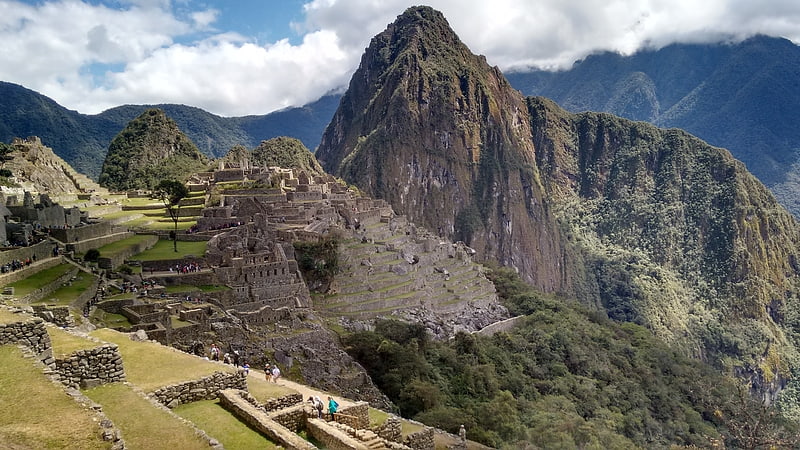
Mountain in Peru. Huayna Picchu, Quechua: Wayna Pikchu, is a mountain in Peru around which the Urubamba River bends. It is located in the Cusco Region, Urubamba Province, Machupicchu District. It rises over Machu Picchu, the so-called lost city of the Incas. The Incas built a trail up the side of the Huayna Picchu and built temples and terraces on its top. The peak of Huayna Picchu is 2,693 metres above sea level, or about 260 metres higher than Machu Picchu.
According to local guides, the top of the mountain was the residence for the high priest and the local virgins. Every morning before sunrise, the high priest with a small group would walk to Machu Picchu to signal the coming of the new day. The Temple of the Moon, one of the three major temples in the Machu Picchu area, is nestled on the side of the mountain and is situated at an elevation lower than Machu Picchu. Adjacent to the Temple of the Moon is the Great Cavern, another sacred temple with fine masonry. The other major local temples in Machu Picchu are the Temple of the Condor, Temple of Three Windows, Principal Temple, "Unfinished Temple", and the Temple of the Sun, also called the Torreon.
Its name is Hispanicized, possibly from the Quechua, alternative spelling Wayna Pikchu; wayna young, young man, pikchu pyramid, mountain or prominence with a broad base which ends in sharp peaks, "young peak". The current Quechua orthography used by the Ministerio de Cultura is Waynapicchu and Machupicchu.[1]
Sacsayhuamán, Cuzco
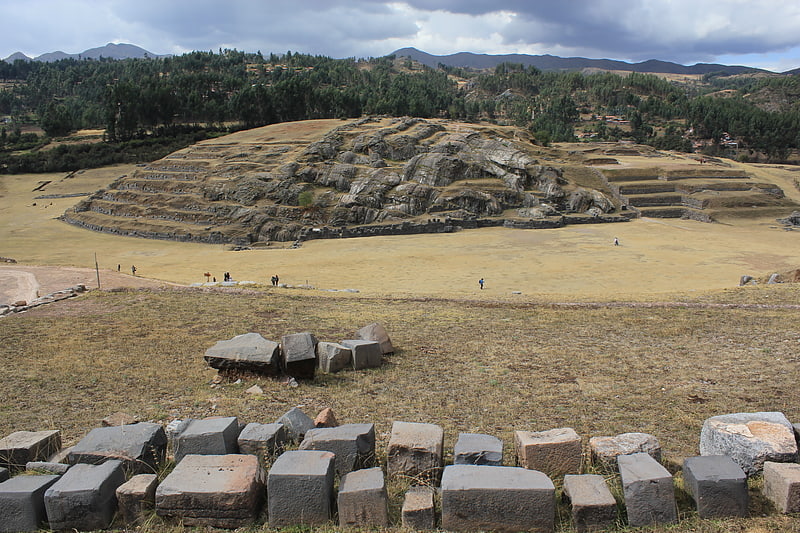
Inca complex known for its stone walls. Sacsayhuamán, which can be spelled many different ways, is a citadel on the northern outskirts of the city of Cusco, Peru, the historic capital of the Inca Empire.
The complex was built by the Inca in the 15th century, particularly under Pachacuti and successors. They built dry stone walls constructed of huge stones. The workers carefully cut the boulders to fit them together tightly without mortar. The site is at an altitude of 3,701 m (12,142 ft).
In 1983, Cusco and Sacsayhuamán together were designated as sites on the UNESCO World Heritage List, for international recognition and protection.[2]
Address: Ciudad del Cusco, Cuzco
Larco Museum, Lima

Also known as: Museo Arqueológico Rafael Larco Herrera
Museum of pre-Columbian artifacts. The Larco Museum is a privately owned museum of pre-Columbian art, located in the Pueblo Libre District of Lima, Peru. The museum is housed in an 18th-century vice-royal building. It showcases chronological galleries that provide a thorough overview of 5,000 years of Peruvian pre-Columbian history. It is well known for its gallery of pre-Columbian erotic pottery.[3]
Address: Av. Simón Bolivar 1515, 15084 Pueblo Libre (Lima Residencial)
Convent of Santo Domingo, Cuzco
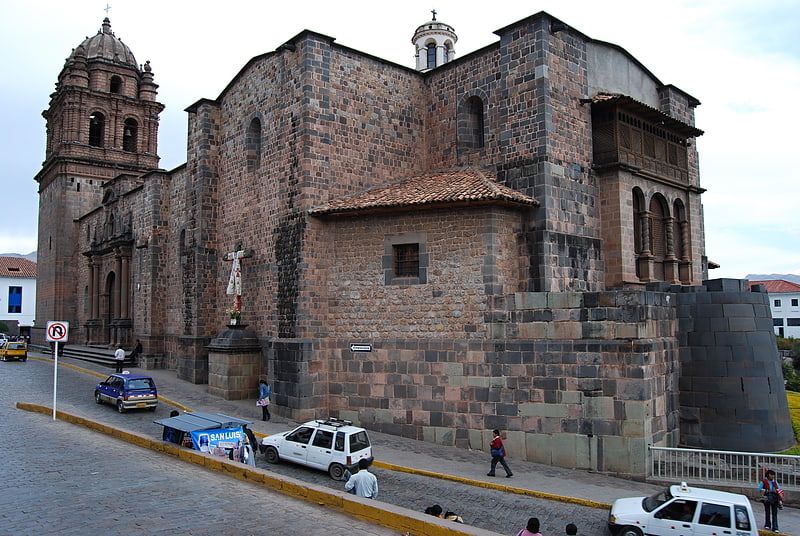
Catholic church in Cusco, Peru. The Convent of Santo Domingo is a convent of the Dominican Order in the city of Cusco, Peru. Spanish colonists built it on top of Coricancha, the most important Inca temple of the capital of the people's empire.[4]
Government Palace, Lima
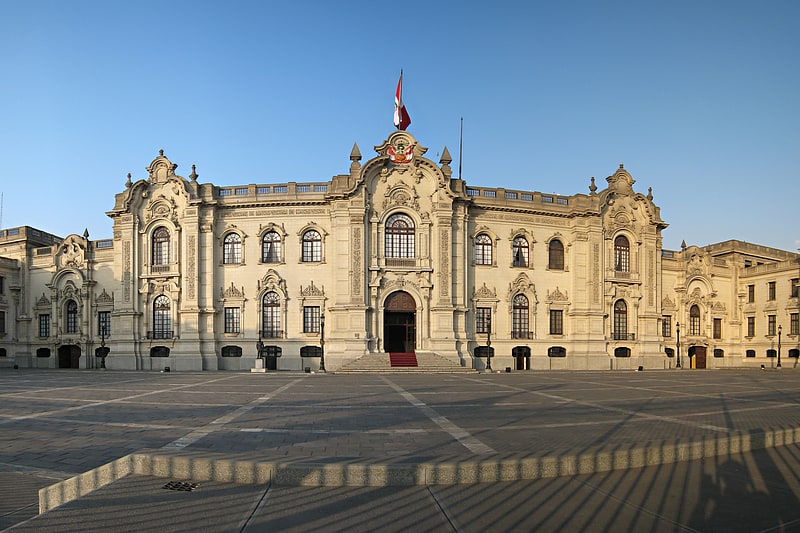
Also known as: Palacio de Gobierno del Perú
Palace and official presidential residence. The Government Palace, also known as the House of Pizarro, is the seat of the executive branch of the Peruvian Government, and the official residence of the President of Peru. The palace is a stately government building, occupying the northern side of the Plaza Mayor in Peru's capital city, Lima. Set on the Rímac River, the palace occupies the site of a very large huaca that incorporated a shrine to Taulichusco, the last kuraka of Lima.
The first Government Palace was built by Francisco Pizarro, governor of New Castile, in 1535. When the Viceroyalty of Peru was established in 1542, it became the viceroy's residence and seat of government. The most recent alterations to the building were completed in the 1930s, under the direction of President Oscar R. Benavides during his second term of office. The chief architects were Claude Antoine Sahut Laurent and Ricardo de Jaxa Malachowski.
A number of ceremonial guard units of the Peruvian Armed Forces are stationed at the Palace, and participate in the daily Changing of the Guard ceremony and other official duties.[5]
Address: Plaza Mayor, Lima (Lima Central)
Coricancha, Cuzco
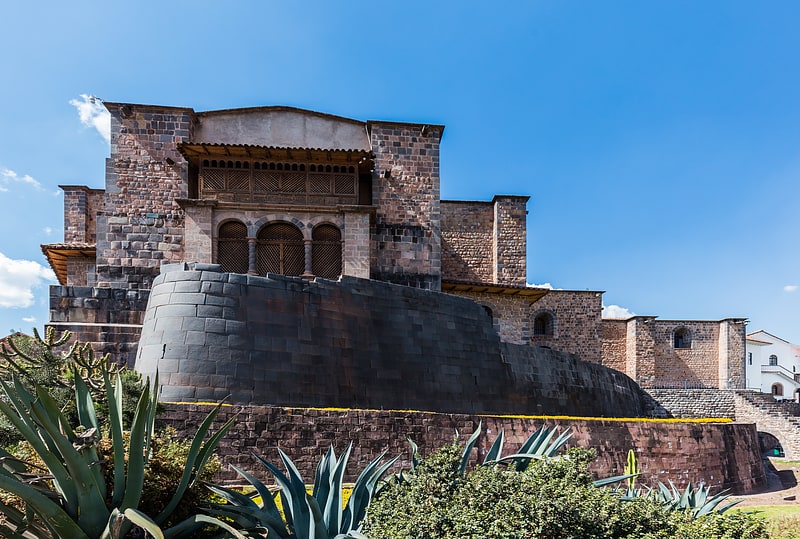
Ruins of an important Inca temple. Coricancha, Koricancha, Qoricancha or Qorikancha was the most important temple in the Inca Empire. It is located in Cusco, Peru, which was the capital of the empire.[6]
Address: Plazoleta de Santo Domingo, Cuzco
Plaza de toros de Acho, Lima

Bullring in Rímac District, Peru. The Plaza de Toros de Acho is the premier bullring in Lima, Peru. Located beside the historical center of the Rímac District, the plaza is classified as a national historic monument. It is the oldest bullring in the Americas and the second-oldest in the world after La Maestranza in Spain. It opened on 30 January 1766.
Of the 56 official bullrings in Peru, the Plaza de Acho ranks most prominently. It has a seating capacity of 13,700 and was constructed of adobe and wood, both traditional materials.[7]
Address: Jr. Hualgayoc 332, Lima (Lima Central)
Intihuatana, Machu Picchu
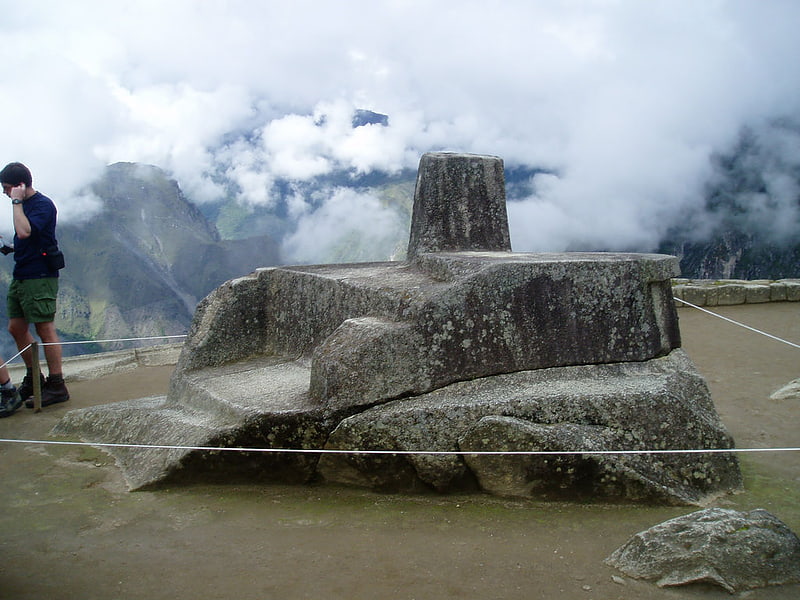
Archaeological site in Peru. Intihuatana at the archaeological site of Machu Picchu is a notable ritual stone associated with the astronomic clock or calendar of the Inca in South America. Machu Picchu was thought to have been built c. 1450 by the Sapa Inca Pachacuti as a country estate. In the late 16th century, the Viceroy Francisco de Toledo and the clergy destroyed those Intihuatana which they could find. They did so as they believed that the Incas' religion was a blasphemy and the religious significance of the Intihuatana could be a political liability. The Intihuatana of Machu Picchu was found intact by Bingham in 1911, indicating that the Spanish conquerors had not found it.[8]
Santa Catalina Monastery, Arequipa
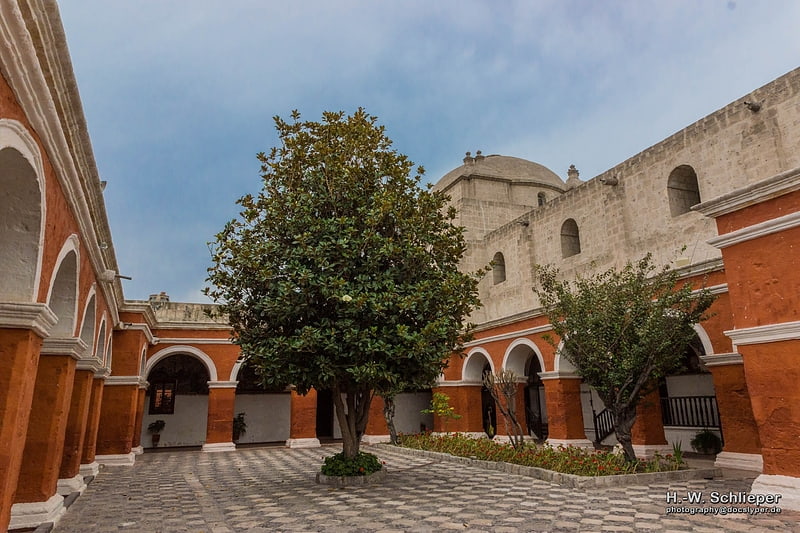
Also known as: Monasterio de Santa Catalina de Siena
Dominican monastery offering tours. The Monastery of Santa Catalina de Siena is a monastery of nuns of the Dominican Second Order, located in Arequipa, Peru.[9]
Address: Santa Catalina 301, 04001 Arequipa
Inti Punku, Machu Picchu
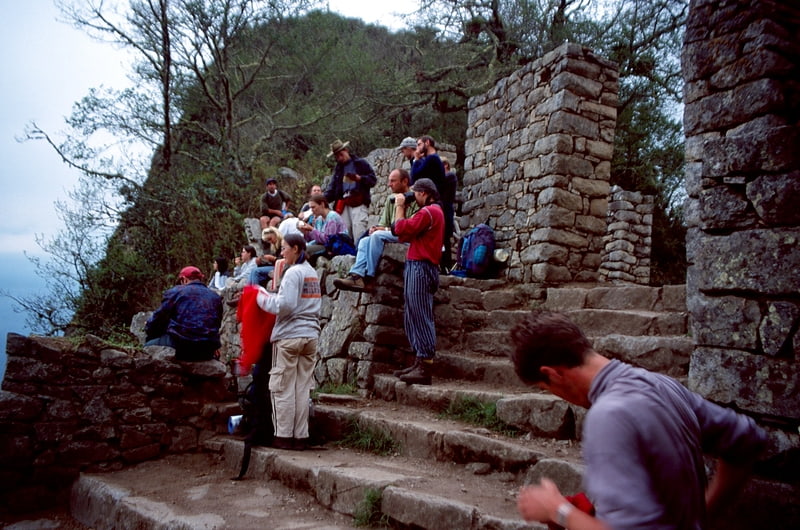
Inti Punku or Intipunku is an archaeological site in the Cusco Region of Peru that was once a fortress of the sacred city, Machu Picchu. It is now also the name of the final section of the Incan Trail between the Sun Gate complex and the city of Machu Picchu. It was believed that the steps were a control gate for those who enter and exited the Sanctuary.
It is one of the most important archeological constructions around the Machu Picchu site. Inti Punku was once the main entrance to Machu Picchu, in particular it was the primary approach from the then capitol city of Cusco to the southeast. The gate likely would have been protected by Incan military. Inti Punku is dedicated to the cult of the Inti, the Sun god. Because of its location on a ridge southeast of Machu Picchu, the rising sun would pass through the Sun Gate each year on the summer solstice. It is located 2745 meters above the sea level. The altitude of the climb to Inti Punku from Machu Picchu is 290 metres. It is a wide archaeological site with windows and gates that are held up by terraces. This is the first place that tourists can see the whole sanctuary. Tourists are able to see the sun rise over the whole mountains by Machu Picchu.[10]
Address: Parque Arqueológico Nacional de Machupicchu, Machu Picchu
Casa del Moral, Arequipa
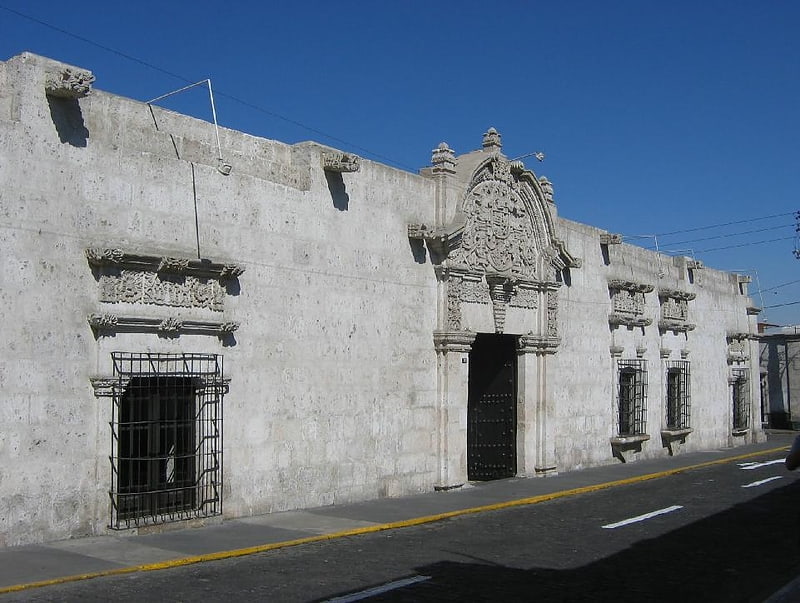
The "Casa del Moral" is a large ancestral house built around 1730 in Arequipa, Peru. Favored by tourists, it is one of the best and well-preserved samples of Andean Baroque civil architecture in Peru. The name of the house derives from the emblematic presence of a centennial tree of "moras" in the center of the main patio of the large house.
The Casa del Moral houses a collection of paintings from the "Escuela Cusqueña", a colonial art form. Its library contains more than 3,000 volumes, primarily hispanic literature. The house is currently the property of the Peruvian bank Bancosur.[11]
Address: Calle Moral 318, Arequipa
Basilica Cathedral of Arequipa, Arequipa
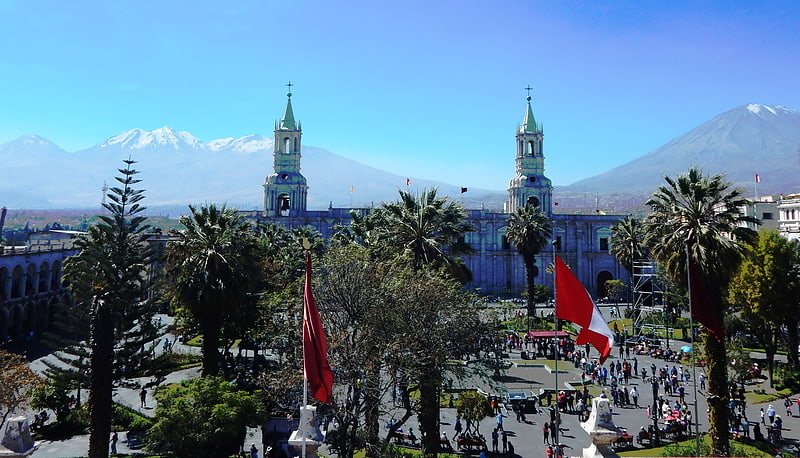
Also known as: Catedral de Arequipa
Huge cathedral with a religious museum. The Basilica Cathedral of Arequipa is located in the "Plaza de Armas" of the city of Arequipa, province of Arequipa, Peru. It is the most important Catholic church of the city and also of the larger Roman Catholic Archdiocese of Arequipa since it is the base of the Archbishop and the Metropolitan Council. The cathedral is also considered one of Peru's most unusual and famous colonial cathedrals since the Spanish conquest.[12]
Address: Plaza de Armas de Arequipa, Areq 01 Arequipa
Huaca de la Luna, Trujillo
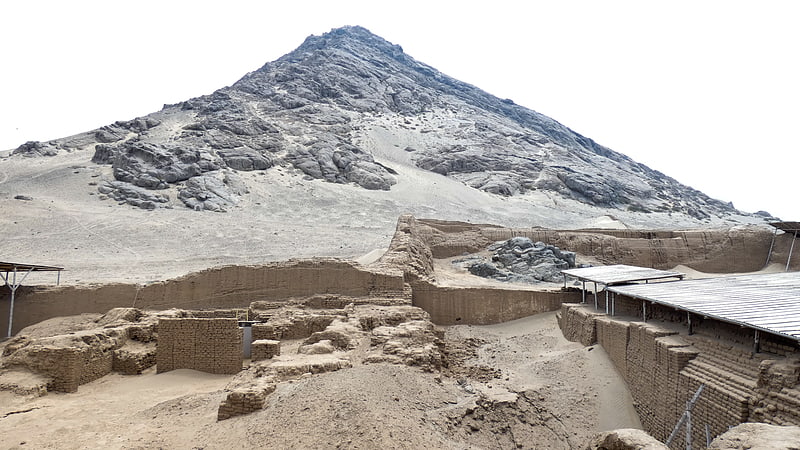
Moche pyramid and religious site. Huaca de la Luna is a large adobe brick structure built mainly by the Moche people of northern Peru. Along with the Huaca del Sol, the Huaca de la Luna is part of Huacas de Moche, which is the remains of an ancient Moche capital city called Cerro Blanco, by the volcanic peak of the same name.[13]
Address: Campiña de Moche, Trujillo
Plaza de Armas, Trujillo
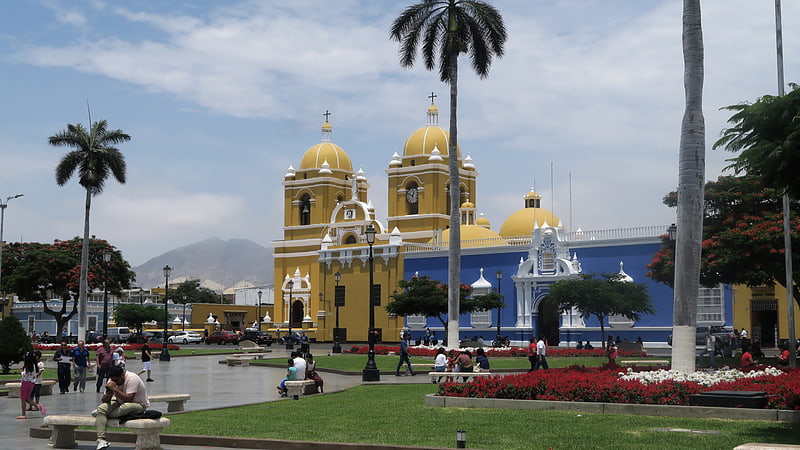
City park in Trujillo, Peru. Plaza de Armas of Trujillo is the main square where the Spanish foundation of Trujillo was made, in northern Peru. It has been the principal locus of history in this city in the republic era. It is located in the central zone of the Historic Centre of Trujillo. In the streets that form this main square are located the buildings of Municipality Palace, the Cathedral, among others. The Plaza de Armas of Trujillo is formed by the Pizarro, Independencia, Orbegoso and Almagro streets. In this square, the proclamation of the independence of Trujillo took place.[14]
Inca Trail to Machu Picchu, Ollantaytambo
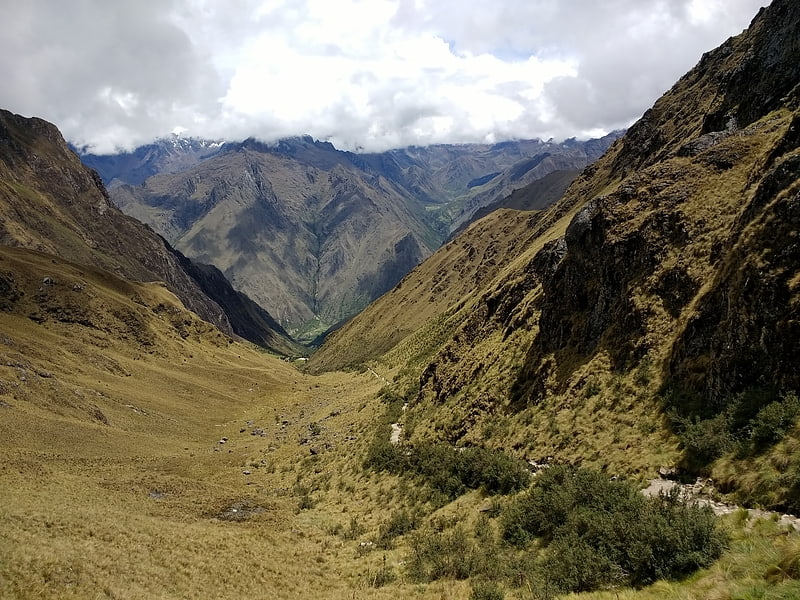
Also known as: Camino Inca a Machu Picchu
The Inca Trail to Machu Picchu is a hiking trail in Peru that terminates at Machu Picchu. It consists of three overlapping trails: Mollepata, Classic, and One Day. Mollepata is the longest of the three routes with the highest mountain pass and intersects with the Classic route before crossing Warmiwañusqa. Located in the Andes mountain range, the trail passes through several types of Andean environments including cloud forest and alpine tundra. Settlements, tunnels, and many Incan ruins are located along the trail before ending the terminus at the Sun Gate on Machu Picchu mountain. The two longer routes require an ascent to beyond 4,200 metres above sea level, which can result in altitude sickness.
Concern about overuse leading to erosion has led the Peruvian government to place a limit on the number of people who may hike this trail per season, and to sharply limit the companies that can provide guides. As a result, advance booking is mandatory. A maximum of 500 people are allowed on the trail each day, of which only 200 are trekkers, the rest being guides and porters. As a result, the high season books out very quickly.
The trail is closed every February for cleaning. This was originally done informally by organizations such as South American Explorers, but is now managed officially.[15]
Huaca del Sol, Trujillo
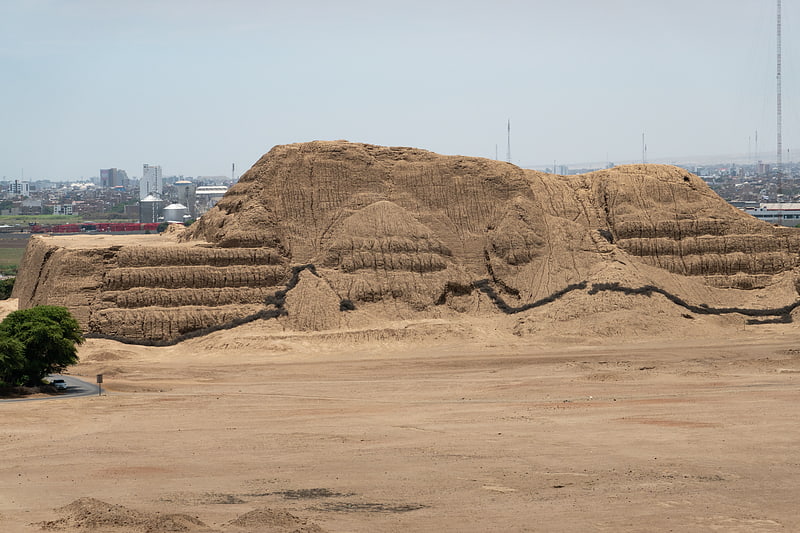
Also known as: Huacas del Sol y de la Luna
Sprawling Moche-civilization temple. The Huaca del Sol is an adobe brick temple built by the Moche civilization on the northern coast of what is now Peru. The temple is one of several ruins found near the volcanic peak of Cerro Blanco, in the coastal desert near Trujillo at the Moche Valley. The other major ruin at the site is the nearby Huaca de la Luna, a better-preserved but smaller temple.
By 450 AD, eight different stages of construction had been completed on the Huaca del Sol. The technique was additive; new layers of brick were laid directly on top of the old, hence large quantities of bricks were required for the construction. Archeologists have estimated that the Huaca del Sol was composed of over 130 million adobe bricks and was the largest pre-Columbian adobe structure built in the Americas. The number of different makers' marks on the bricks suggests that over a hundred different communities contributed bricks to the construction of the Huacas.
The Huaca del Sol was composed of four main levels. The structure was expanded and rebuilt by different rulers over the course of time. It is believed to have originally been about 50 meters in height and 340m. by 160 m. at the base. Located at the center of the Moche capital city, the temple appears to have been used for ritual, ceremonial activities and as a royal residence and burial chambers. Archaeological evidence attests to these functions.
During the Spanish occupation of Peru in the early 17th century, colonists redirected the waters of the Moche River to run past the base of the Huaca del Sol in order to facilitate the looting of gold artifacts from the temple. The operation of the hydraulic mine greatly damaged the Huaca del Sol. In total, approximately two-thirds of the structure has been lost to erosion and such looting. The remaining structure stands at a height of 41 meters (135 feet).
Looting and erosion due to El Niño continue to be major concerns to this day.[16]
Alpamayo, Huascarán National Park
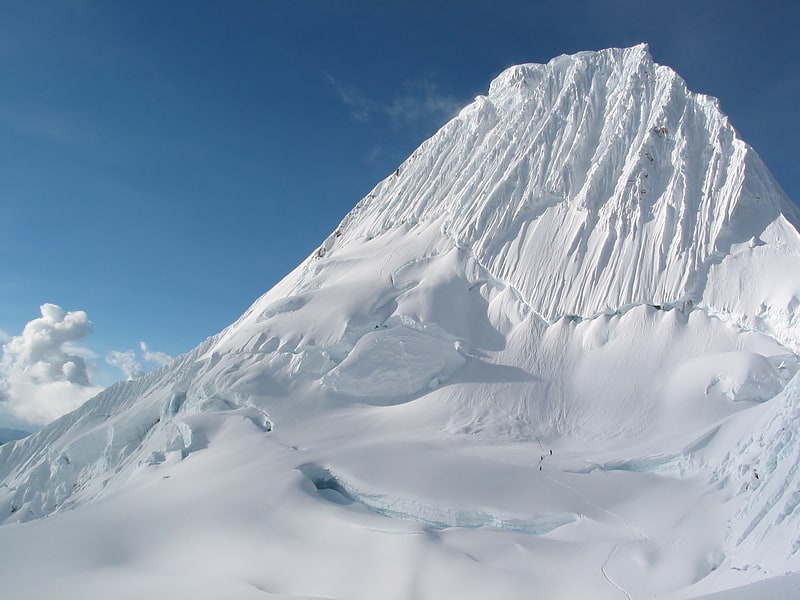
Iconic, ice-covered pyramidal peak. Alpamayo or Shuyturaju is one of the most conspicuous peaks in the Cordillera Blanca of the Peruvian Andes. Alpamayo Creek originates northwest of it.
The Alpamayo lies next to the slightly higher Quitaraju.
In July 1966, the German magazine "Alpinismus", published a photo of Alpamayo taken by American photographer Leigh Ortenburger accompanied by an article on a survey among mountaineering experts, who chose Alpamayo as "The Most Beautiful Mountain in the World".[17]
Address: Parque Condoriri, Huascarán National Park
Llanganuco Lakes, Huascarán National Park
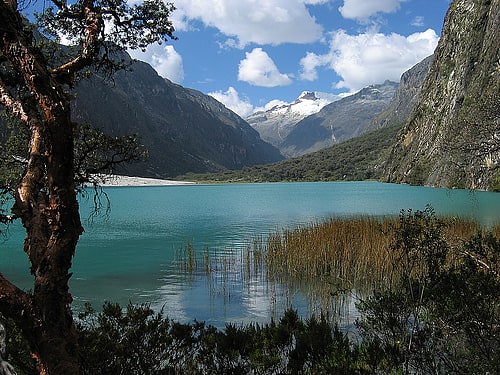
Also known as: Quebrada de Llanganuco
Lake in Peru. The Llanganuco Lakes, Chinancocha and Orconcocha, are situated in the Cordillera Blanca in the Andes of Peru. They are located in Ancash Region, Yungay Province, Yungay District, about 25 km north-east of Yungay. The lakes are part of Huascarán National Park.[18]
Pinkuylluna, Ollantaytambo
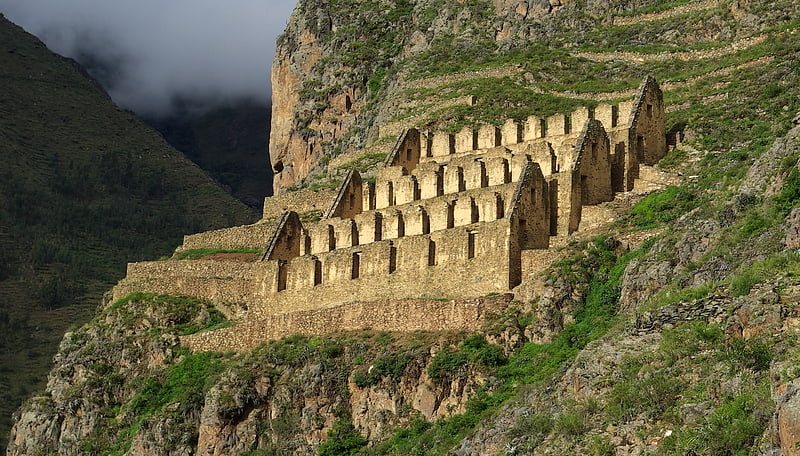
Pinkuylluna or Pinkulluna is an archaeological site on a mountain of the same name in Peru located in the Cusco Region, Urubamba Province, Ollantaytambo District. It is situated between the rivers Patakancha and Willkanuta, northeast of the town Ollantaytambo.[19]
Lake 69, Huascarán National Park
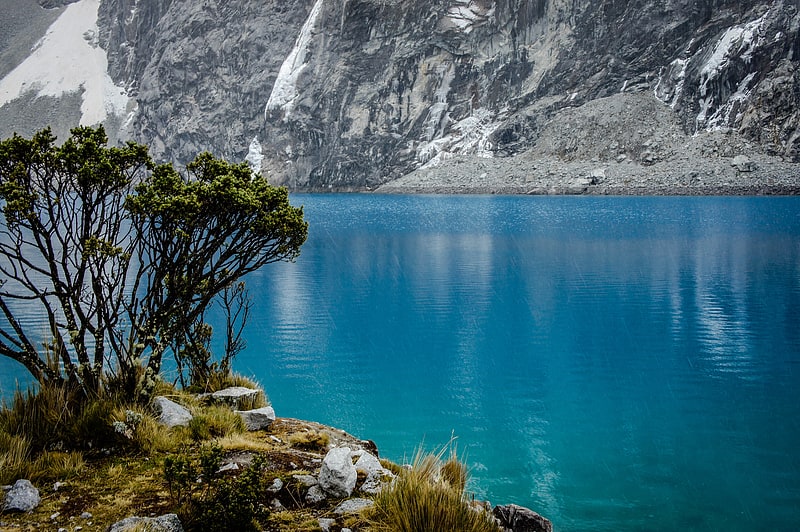
Also known as: Laguna 69
Lake in Peru. Lake 69 is a small lake near of the city of Huaraz, in the region of Áncash, Peru. It is one of the more than 400 lakes that form part of the Huascarán National Park, a UNESCO Biosphere Reserve and World Heritage Site. In the thaw season, the lake is nourished by a waterfall from Chacraraju.
Its name comes from the fact that the lake did not have a name before the Huascaran National Park was created in 1975. The need to include all of the lakes of the proposed park into a list forced authorities to give a number-based names to those without a traditional name (lakes such as Allicocha, Auquiscocha or Palcacocha, had a names in Hispanicized Quechua).
It is one of the more important tourist destinations of the region, visited mainly by hiking and mountaineering enthusiasts, given the simple access and the spectacular scenery. The hiking route to the lagoon starts from the Cebolla Pampa campground and runs along the brook that runs down from the same lake, and forms several waterfalls and cataracts.[20]
Fortaleza del Real Felipe, Callao
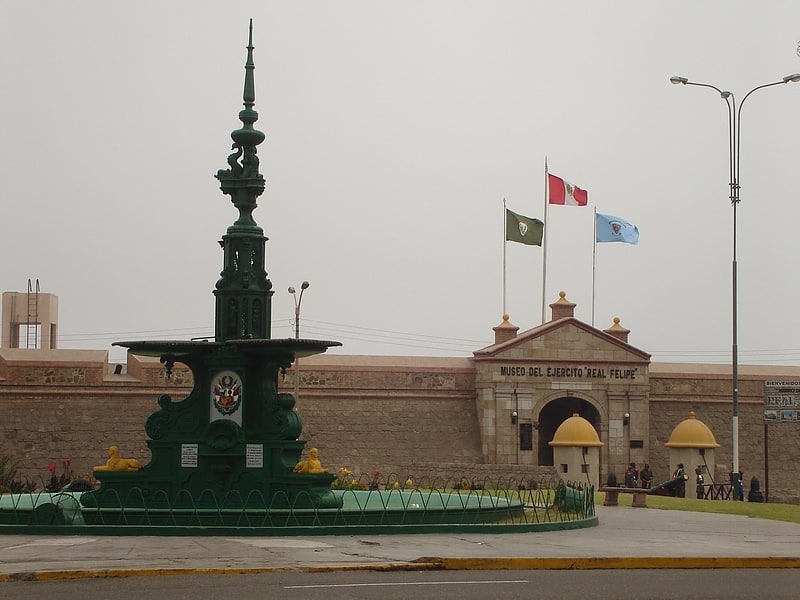
Ancient fort with tours and a museum. The Real Felipe Fortress was built to defend the main Peruvian port and the city of Lima from pirates and corsairs during colonial times. The fortress was pivotal in the 1866 naval battle between a Spanish fleet sent to South America to "reclaim" its colonies and land batteries in the coast of Peru. The Real Felipe Fortress is currently the Peruvian Army Museum, displaying historical uniforms, weapons and other military paraphernalia.[21]
Address: Plaza Independencia, 07021 Callao (Callao)
Estadio Max Augustín, Iquitos
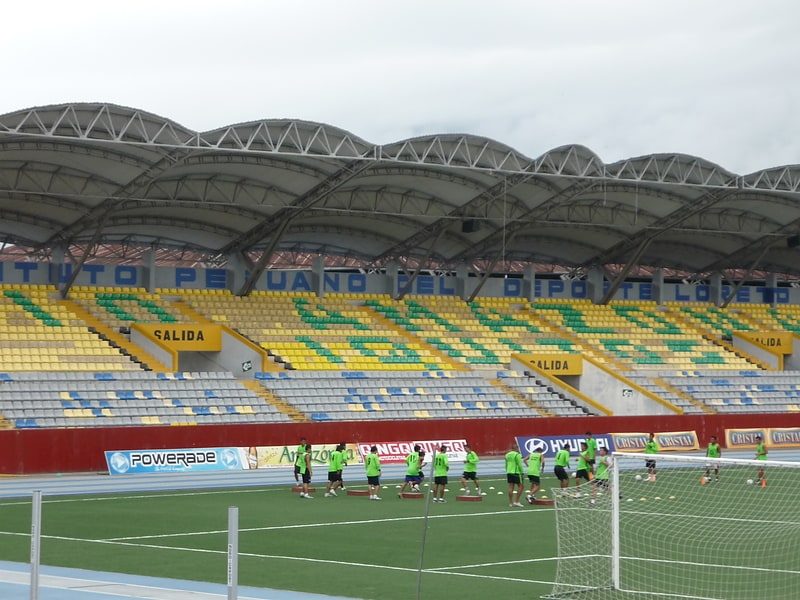
Multi-purpose stadium in Iquitos, Peru. The Estadio Max Augustín is a multi-purpose stadium in Iquitos, Peru. It is the home ground of the football team Colegio Nacional Iquitos and several other Copa Perú teams from Iquitos and the surrounding region. The stadium holds 24,576 people. It was built in 1942 and renovated in 2005. The stadium has artificial turf, an artificial running track, and was a venue in the 2005 FIFA U-17 World Championship[22]
Casa de Fierro, Iquitos
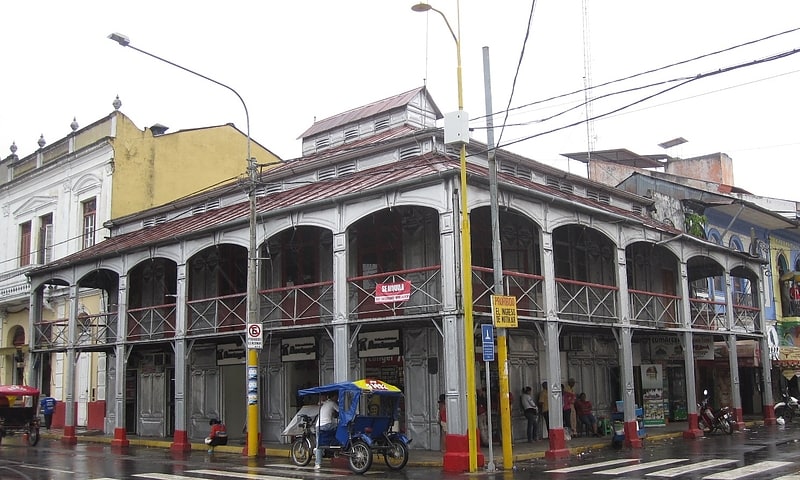
Building in Iquitos, Peru. La Casa de Fierro, located in the city of Iquitos in the jungle of Peru, in front of the major square between Próspero and Putumayo streets, is a large iron residence built during the rubber boom at the end of the nineteenth century. The house was bought by the Bolivian explorer and entrepreneur Antonio Vaca Diez.
La Casa de Fierro is one of the finest as well as best-preserved samples of civil architecture in Peru. The walls, ceiling, and balcony are plastered in rectangular sheets of iron. It is said to be the first prefabricated house in the Americas. Although popularly said to have been designed by the French architect Gustave Eiffel, there is no evidence at all that this is true; the building does not reflect his architectural style. Since 2011 well substantiated claims prove it was built in the Belgian workshops of Les Forges d'Aiseau. Rubber baron Anselmo del Aguila bought it at the International Exposition of Paris in 1889. Once dismantled, it was brought in pieces to Iquitos, and assembled there in 1890.
Since 1985, it is being administered by the Club Social de Iquitos; which has contributed in its restoration. Its second floor now has a restaurant. Today the house servers as a restaurant in the second, La Casa de Fierro Restaurante, and stores in the ground level.
A fully different story of the origin of the house is told in Mario Vargas Llosa's Captain Pantoja and the Special Service, a comic novel.[23]
Address: Iquitos, streets .org
National Railway Museum, Tacna
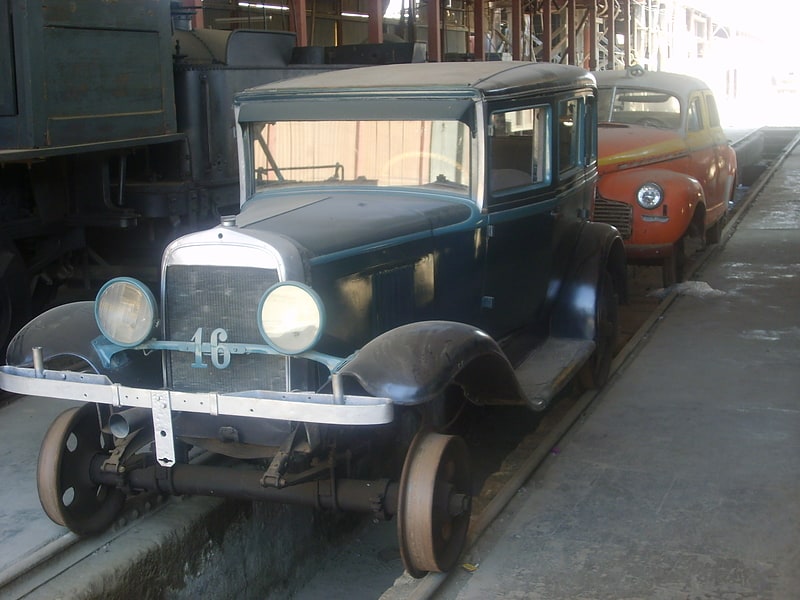
Also known as: Museo Ferroviario Nacional de Tacna
Museum in Tacna, Peru. The National Railway Museum of Peru is located in Tacna, Peru.
The museum was built at the site of the old Tacna-Arica railway station, which connected the two cities. The museum features many preserved elements used during the second half of the nineteenth century before it was destroyed. The exhibition presents a history of the railway and its functions.
The Museum is located at the Tacna-Arica Railway Station, at Av. Gregorio Albarracín 402, at the intersection with Av. 2 de Mayo, Tacna. The train service began in 1856 and the station was built in 1855 according to a design by Walter Evans. It was declared a Historic Monument in 1980. The arch with bell tower is very characteristic. The old station is still largely preserved in its original state with many elements from the second half of the 19th century, when it was built. The exhibition gives the visitor an insight into the historical course of the railway.
The Tacna-Arica Railway closed in 2012, but as of June 2014, there were plans to reopen it.
Since 27 May 2016, a railbus has again been running on the Tacna-Arica Railway. However, the museum has been under reconstruction since 2018. A sign informed: "Due to reconstruction, the entrance to the museum is closed until further notice. The administration." The current status is not known.[24]
Address: Av 2 de Mayo, Tacna
Tacna Cathedral, Tacna
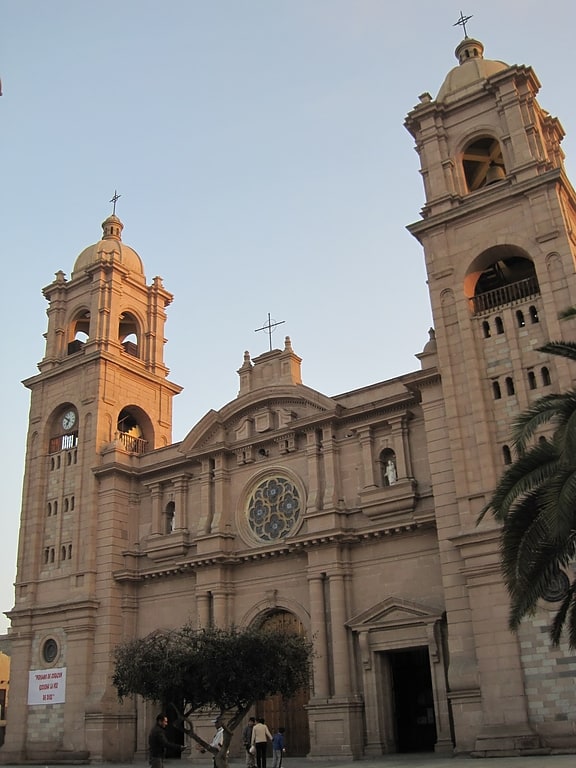
Also known as: Catedral de Tacna
Catholic church in Tacna, Peru. Tacna Cathedral is a church located in the center of the city of Tacna, Peru.[25]
Address: Plaza de Armas, Tacna